COPD & Emphysema
Emphysema Can Be Restrictive!
Breathing is hard work. Even taking a shower or doing the laundry can be a strain. Patients often have difficulty taking long walks, travelling, or feeling safe when they leave the house.
What is COPD?
COPD stands for chronic obstructive pulmonary disease — a very common condition affecting the airways. It is caused by pollutants that get into the lungs, initially blocking (obstructing) the airways as well as causing chronic inflammation. The main cause is smoking. The urge to cough caused by persistent bronchial irritation is commonly referred to as smoker’s cough. Damage to the bronchi that has become irreversible is referred to by lung specialists as a permanent obstruction to the airways, i.e., COPD.
What is emphysema?
Emphysema is a form of COPD. In severe emphysema, parts of the lungs are damaged, resulting in air becoming trapped in the lungs. The damaged parts of the lung get bigger, putting pressure on the healthy parts of the lung and the diaphragm. When that happens, it is difficult to breathe properly and take deep breaths. This continuous shortness of breath can make it difficult to perform daily activities and enjoy many aspects of life without stopping for breath, taking a break, or asking for help.
Unfortunately, there is no cure for emphysema, but the Zephyr® Valve can help patients breathe more easily, enjoy life better, and have an improved quality of life1 despite their condition.
Healthy Lung
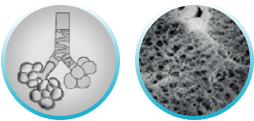

Lung with Emphysema
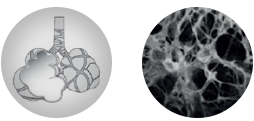
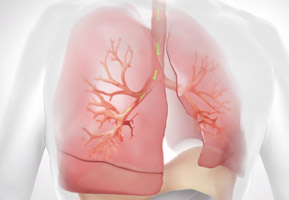
What is the difference between emphysema and COPD?
Emphysema is a severe form of COPD. People who have emphysema live with severe breathlessness which often stops them doing simple daily activities without needing to take a break to get their breath back or rest.
Symptoms of Emphysema
| Breathlessness | Difficulty in performing daily activities such as washing, getting dressed, housework, walking or eating without shortness of breath | Tiredness or low energy | Persistent cough | Wheezing |
| Exacerbation (obvious worsening of the condition) | Coughing up sputum or phlegm | Pain or tightness in the chest | Blue or grey lips/fingernails when active | Frequent airway infections, such as bronchitis or pneumonia |
As the condition becomes worse over time, patients often get used to the restrictions it causes. This creates a new norm for patients, without them even noticing.
If you notice any of these symptoms and have not been treated yet, talk to your doctor straight away.
Treatment Options for Emphysema
Emphysema cannot be cured, but the right treatment can help you breathe more easily, be more active and improve your quality of life. There are various treatment options, depending on the severity of your condition. Your doctor can help you decide what is best for you.
Treatment with and without Medication

COPD medicines, stop smoking programmes, lung exercises, oxygen therapy
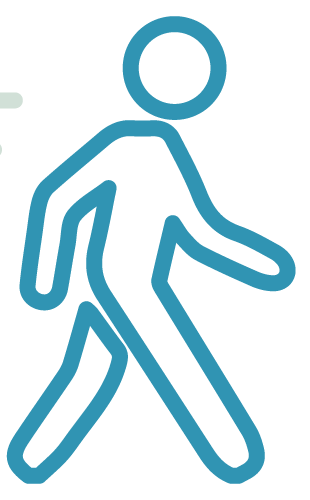
Rehabilitation

Endoscopic lung volume reduction — e.g., Zephyr Valve
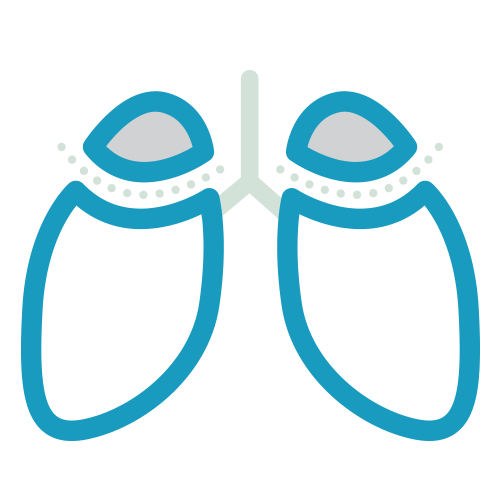
Surgical lung volume reduction

Lung transplant
Non-surgical
-
- COPD medicines: These may include inhalers, oral steroids, antibiotics, or other prescription drugs.
- Stop smoking programmes: To benefit from the minimally invasive treatment options, you need to stop smoking.
- Rehabilitation: Your doctor can recommend a rehabilitation course to help you exercise your lungs and learn to breathe more efficiently.
- Oxygen therapy: Emphysema reduces the amount of oxygen that reaches your bloodstream. Your doctor can prescribe you oxygen therapy if medication does not help you enough.
Minimally Invasive/Endoscopy
- The Zephyr Valve is a device used to treat severe emphysema. It is not a prescription drug or surgery, which requires cutting the skin. Instead, the Zephyr Valve is a brief medical intervention which has been clinically proven to help patients breathe more easily, be more active, and enjoy a better quality of life.1
Surgery
- Lung volume reduction with surgery and bullectomy: The operation is usually performed during a procedure called VATS (video assisted thoracoscopic surgery). The surgeon makes a small cut in one side of your chest. A special instrument is used to both cut a diseased portion of the lung and staple the lung at the same time. The staple line seals the cut surface and prevents or reduces any air leaks.
- Lung transplant: When the lungs are too damaged to benefit from surgery, certain patients may meet the criteria for lung transplantation surgery. If patients receive this treatment, they must take immune-suppressing medications for the rest of their lives. However, the transplant also carries high-risk complications such as organ rejection or death.
